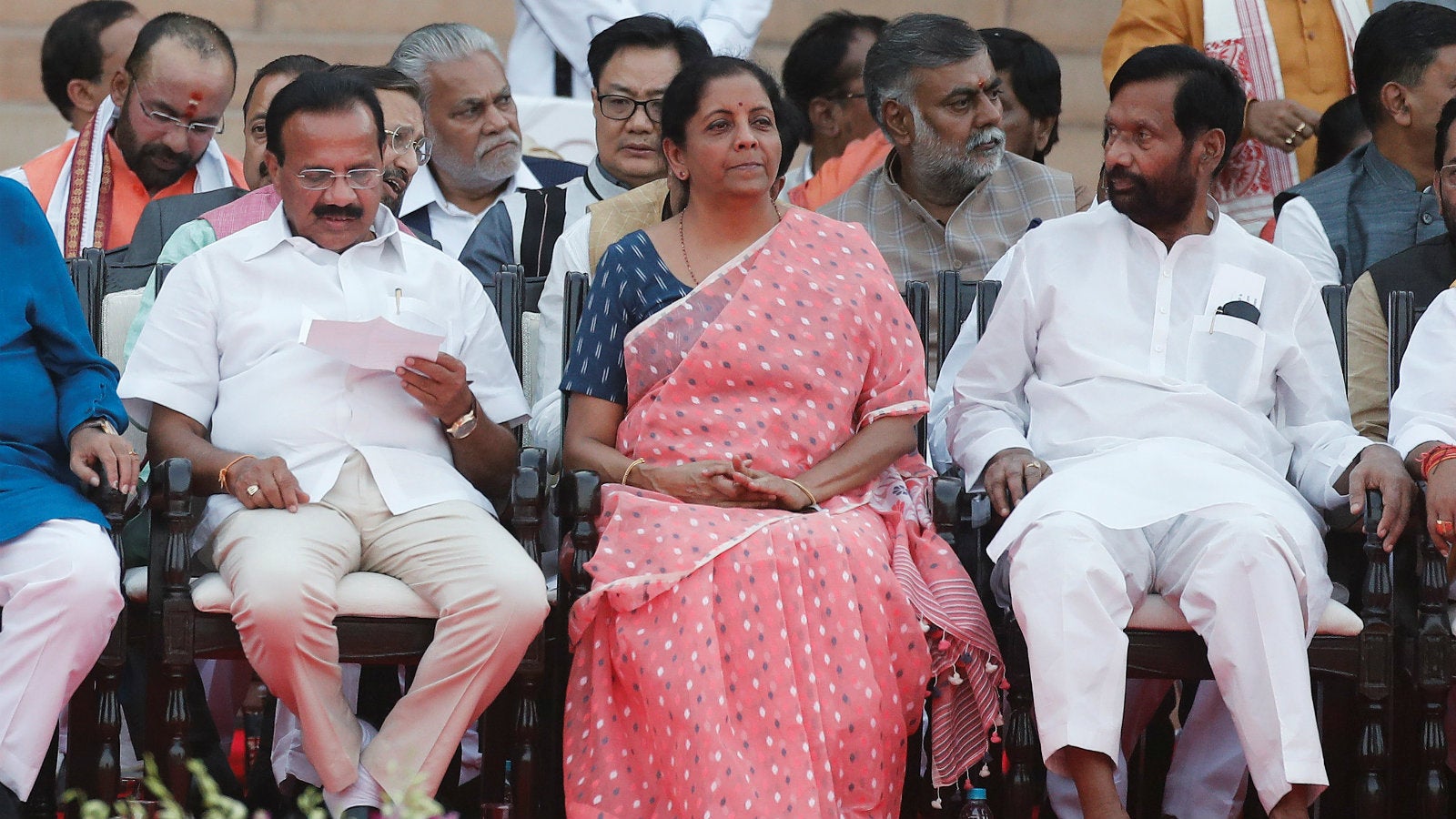A fragile economy leaves Nirmala Sitharaman with little room to dole out goodies
The last budget of a government’s tenure generally tends to be populist, while the first is usually a serious exercise in addressing economic challenges.


The last budget of a government’s tenure generally tends to be populist, while the first is usually a serious exercise in addressing economic challenges.
Indian finance minister Nirmala Sitharaman is likely to follow this path when she presents the second Narendra Modi government’s first budget on July 5. It would be unrealistic to expect concessions or tax reliefs from her. Besides, she has some major patchwork to do on the economy.
In dire straits
The Indian economy is in a fragile state.
GDP growth slumped to 5.8% in the January-March period of financial year 2019, the lowest in 20 quarters. Growth for the full year, at 6.8%, was also a five-year low. All important indicators of economic activity like the dipping index of industrial production (IIP) and plummeting automobile sales confirm the slowdown.
The recent periodic labour force survey (PLFS) report of India’s national sample survey office (NSSO) points to the prevailing high levels of unemployment in the country.
India’s non-banking financial companies (NBFCs), or shadow banks, which have been driving consumption in many consumer durable segments, are also facing liquidity issues.
The government’s record on fiscal prudence, too, is patchy. The fiscal deficit, or the difference between revenues and receipts, of the centre and states stands at 7% of the GDP. At around 70%, the government’s debt-to-GDP ratio is also very high.
This macro economic backdrop demands measures to boost growth. There are some wrinkles, in particular, that can be ironed out.
Incentivise banking: The central bank has been making the right moves by trimming key interest rates. Yet, for the Reserve Bank of India’s (RBI) policy moves to be effective, banks must transmit the rate cuts to the end consumers.
The major constraint in monetary transmission is that lenders are faced with anaemic levels of deposit growth. Bank deposits compete with the government’s small savings schemes such as the National Savings Certificate (NSC) and Public Provident Fund (PPF), which tend to be more attractive thanks to their higher returns.
This anomaly needs to be addressed in the forthcoming budget by incentivising bank deposits.
Maintain fiscal prudence: As things stand, there is no major room for fiscal stimulus in the upcoming budget.
The shortfall in tax collections in financial year 2019, as per the government’s revised estimates, is around Rs1.6 lakh crore ($23 billion). Also, the ambitious targets for revenue growth in the current financial year are unlikely to be met.
Therefore, any form of fiscal stimulus, which will worsen fiscal deficit, is not desirable.
Focus on structural reforms: The budget and the policy initiatives that follow should ideally focus on structural reforms that raise factor productivity, or the net economic output.
Labour and land reforms brook no delay. China’s rising wages are forcing it to move away from labour-intensive manufacturing practices in sectors like textiles. India’s rigid labour laws, on the other hand, are standing in the way of growth.
Additionally, the clean up of the banking and real estate sectors with reforms like the Insolvency and Bankruptcy Code (IBC) and Real Estate Regulation Act (RERA) should continue.
It is important to kick start economic growth and revive the economy’s animal spirits. Sitharaman can send the right message through an imaginative budget.
We welcome your comments at [email protected].